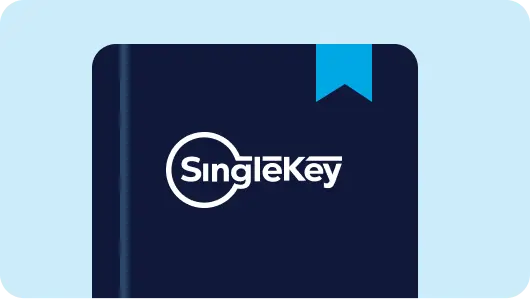Does your tenant pay their rent on time, take good care of your property, and never cause you any grief? If so, you’re probably enthusiastic about offering them the opportunity to renew their lease with you.
We don’t blame you for wanting to retain a first-rate tenant. After all, finding a new tenant requires considerable time, money, and effort. You must market your rental, sort through applications, screen tenants, conduct property viewings, etc.
Renewing your lease with your current tenant lowers your turnover costs and allows you to maintain a steady rental income stream. Plus, you avoid the risk of bringing in a bad tenant.
In this article, we’ve compiled everything you need to know to navigate the lease renewal process in Canada. You’ll learn how government regulations treat lease renewals, how and when to present a renewal offer to your tenant, and how to encourage your tenant to accept your new lease agreement.

What happens when a fixed-term lease ends in Canada?
All fixed-term leases are legally enforceable agreements with a clearly defined beginning and end date. Once you and your tenant sign a lease agreement, you’re both bound by the terms and conditions of the contract. While most fixed leases span one year, they can be for any length of time: six months, three months, 40 days, etc.
But what exactly happens when a fixed term lease ends? Does it renew automatically or does the agreement need to be updated? Can your tenant remain in your rental, or do they need to vacate the property?
The answer to these questions depends on where your rental property is located in Canada.
In a province like Alberta, once a fixed-term lease expires, the tenancy automatically ends, and the tenant must move out if they haven’t arranged a new lease with the landlord. The landlord has no obligation to allow the tenant to remain in the property, nor do they need to provide them with any notice to move out. In other words, the lease agreement doesn’t automatically renew – it ends on the specific end date outlined in the document. To restore the lease, the tenant and landlord must sign a new lease agreement after the current term finishes.
In provinces like Ontario and British Columbia, things work differently. Once a fixed-term lease ends, it automatically converts to a month-to-month tenancy should the tenant and landlord not sign a new fixed-term agreement. This arrangement continues indefinitely until the tenant or landlord decides to end it.
In Quebec, lease renewals work similarly to those in Ontario and BC. Once a fixed-term lease expires, it renews instantly without requiring notice from the landlord or tenant. However, the lease renews for the same duration as the expired lease rather than continuing as a month-to-month contract. The exception is if the prior fixed lease lasted more than 12 months. In that case, the new lease will renew for a maximum period of 12 months.
What are the steps for offering a lease renewal to your tenant?
Preparing a lease renewal offer for your tenant is straightforward and doesn’t involve much paperwork. However, there are a few best practices worth following to maximize the chance of your tenant opting to stay rather than move out.
If there’s one tip you need to heed, it’s this: inform your tenant about your intention to renew the lease at least three months before the current lease ends. Doing so will give your tenant enough time to review your renewal offer and decide whether to accept it or decline it. Plus, if they choose to move out at the end of the current term, you can get a head start in finding a new tenant.
Suppose you wait until the last minute to present your lease renewal to your tenant, and they decide to bail. In that case, you risk having your rental sit empty for months as you search for a replacement tenant. The longer you go without a tenant, the more rental income you forfeit, hurting your profit at year-end. You can minimize this risk by being proactive and notifying your tenant early of their renewal options.

Step 1: Determine the terms of the lease agreement
It’s perfectly acceptable not to make a single modification to your existing lease agreement’s terms. However, you may wish to review them and make any amendments you deem necessary. That way, your updated lease will be better aligned with your preferences and needs and those of your tenant.
For example, you may incorporate a policy that requires your tenant to acquire tenant insurance if they don’t already possess it. Or, you can make your rental pet-friendly to boost its appeal, as many renters own pets.
Another important consideration is a rent price increase. If you plan on hiking your monthly rental fee, research local rent prices and housing market trends to determine how much you should charge.
Remember that each province and territory has laws that govern rent increases. These laws dictate:
- How often you’re allowed to raise your rent
- The maximum amount you can raise your rent each period
- How much, if any, notice must you give your tenant of an impending rent hike
Check out our Rent Increase Guidelines report to learn about the rules in your province or territory.
Step 2: Notify your tenant of the upcoming lease renewal
Once you’ve settled on your lease terms, the next step is to send a letter advising your tenant of the forthcoming lease renewal. Here are some of the details it should include:
- End date of the current lease
- Proposed length of the new lease
- Changes to any key terms
- New monthly rent price, if applicable
- The date the letter was sent
- The date you wish to receive a response from the tenant
- Your contact information
As mentioned, it’s wise to provide your tenant with this notice at least 90 days before the current lease expires.
Step 3: Negotiate the lease terms with your tenant
There’s a chance your tenant may disapprove of your updated lease agreement’s terms. If that’s the case, arrange with them to discuss their concerns and answer any questions they may have. Ask them what lease features they don’t like and what changes you can make that’ll motivate them to stay on as your tenant.
Step 4: Draft the lease agreement
The next step is to formalize the lease in writing. It’s prudent to document the updated terms in a brand-new lease agreement, even if you’ve only made minor alterations.
Depending on where you live, the court may recognize a verbal lease as valid. Still, it’s better always to utilize a written lease as it serves as robust evidence should a dispute arise.
When drafting the new lease agreement, ensure that it covers every aspect required by law in your jurisdiction.
Here are free lease agreement templates that you can use.
Step 5: Sign the lease agreement
The final step is for you and your tenant to sign the new lease. Send the lease agreement to your tenant for their review and approval. Once they sign off on the document, add your signature and provide them with a copy. That’s it – you can now file away the lease agreement and not look at it again until its expiration date approaches.
Tips for encouraging your tenant to sign a lease renewal
To retain your tenant, you must craft a compelling lease renewal that speaks to their unique needs and wishes. It must match or exceed what the competing rentals have to offer. Otherwise, your tenant will move on to what they feel is a more promising deal.
Here are some tips for what to include in your lease renewal offer:
Don’t overcharge for your rent
If you plan to increase your rental fee, ensure the figure you choose it’s fair and reasonable and based on rent prices for comparable properties in your location. Don’t alienate your tenant by sharply hiking their rent to cover your expenses or boost your profit. There’s a good chance they’ll begin scouring the market for a new, affordable property if you do so.
Add an incentive (or two)
Adding some perks to your new lease agreement can persuade your tenant to stay long-term, so it pays to anticipate what they like and what would make their stay more convenient. Some incentives to consider are offering to pay utilities for part of the lease period, a free month of rent, a one-year deferred rent increase, or a complimentary service like carpet cleaning.
Upgrade the property
A substantial property upgrade that enhances your tenant’s living standards can inspire them to sign your new lease agreement. As the lease expiry date approaches, consider what type of improvement would resonate positively with your tenant. You can ask for their input, too.
Reasons not to renew a lease with your tenant
Lease renewals provide some enticing benefits, but offering one to your tenant is not always ideal. Here are some examples of such scenarios:
Your tenant is causing you trouble
Does your tenant consistently pay their rent late, damage your property, or instigate conflict with your neighbours (or perhaps all three!)? If so, you may be better off letting the current lease expire and finding a suitable replacement tenant than putting up with the grief and stress.
You want to perform an extensive renovation
A strategic and large-scale renovation can significantly boost your rental’s value and allow you to command higher rent prices. However, as long as your property is occupied, you’ll never get the opportunity to complete the work you need to get done. Declining to renew your lease can enable you to accomplish your task.
You’re contemplating selling your property
Suppose you anticipate selling your rental soon. In that case, you’re better off sticking to a month-to-month tenancy rather than signing a new, long-term lease agreement. You’ll have much more flexibility to plan your sale.
Our final thoughts
Lease renewals provide numerous benefits for you as a landlord. You can generate a steady rental income, save time and money to find a new tenant, and reduce the risk of losing money due to vacancy. If your tenant dutifully pays their rent on time and maintains your property well, proposing a lease renewal to them is a no-brainer.
When crafting your lease renewal offer, it’s crucial to be proactive and act early. Inform your tenant at least three months before the current lease’s end date, so they have ample time to decide whether to stay or move out. Should they decline your offer, you’ll have plenty of time to find a new tenant, thus minimizing the risk of vacancy and lost rental income.
Of course, you’re under no legal obligation to offer a lease renewal. If your current tenant is problematic, there’s no shame in looking for a new one.
At SingleKey, we understand the critical role that timely, relevant, and reliable data plays in helping you choose the right candidate to be your tenant. For this reason, we created the Tenant Report. This comprehensive yet easy-to-read document provides you with a wealth of information about an applicant’s financial history and background, including:
- Credit score and credit history
- Social media check
- Public document scan of over 200,000 databases worldwide
Once you’ve purchased your report, you can download it in as little as five minutes!


